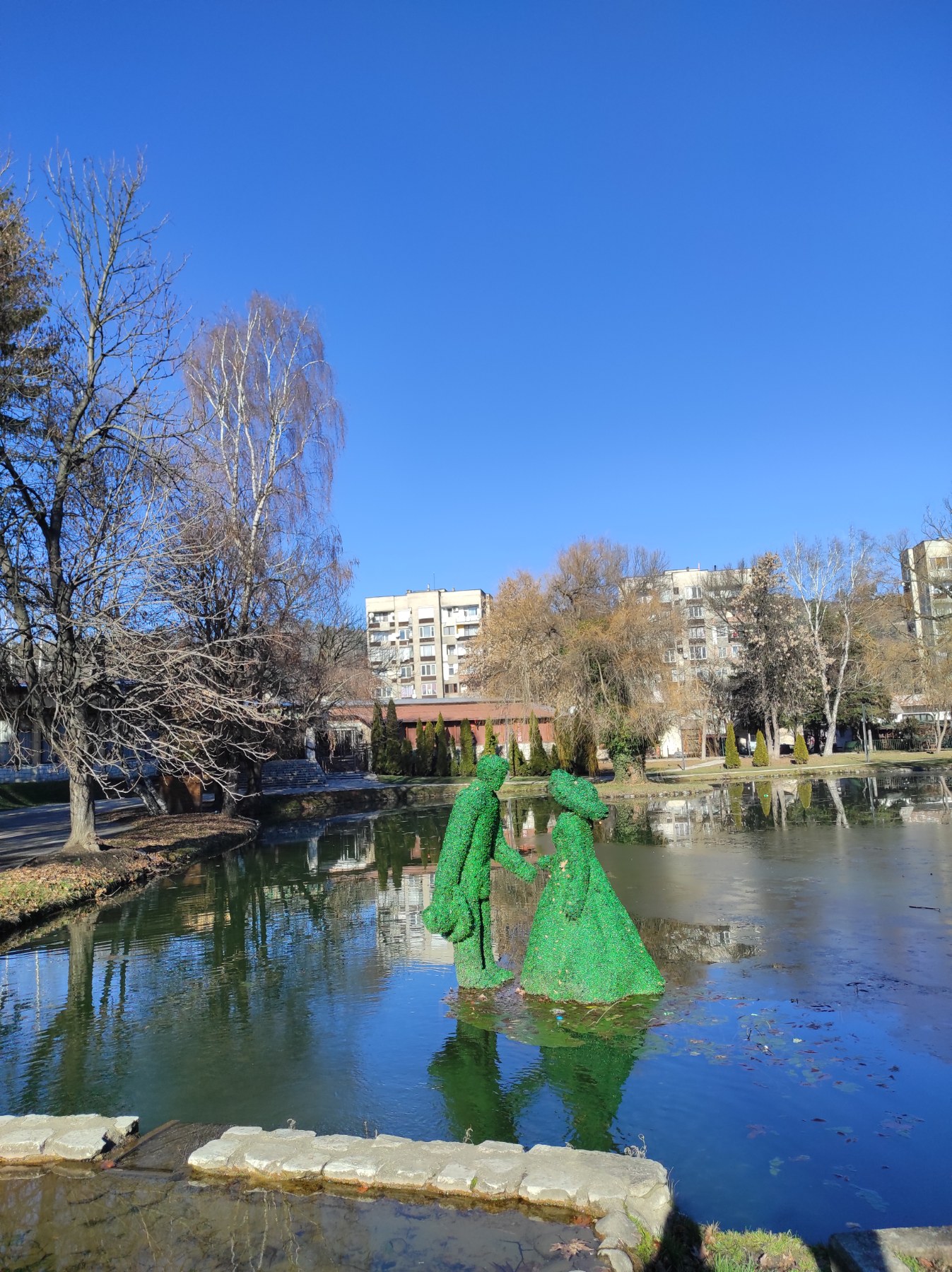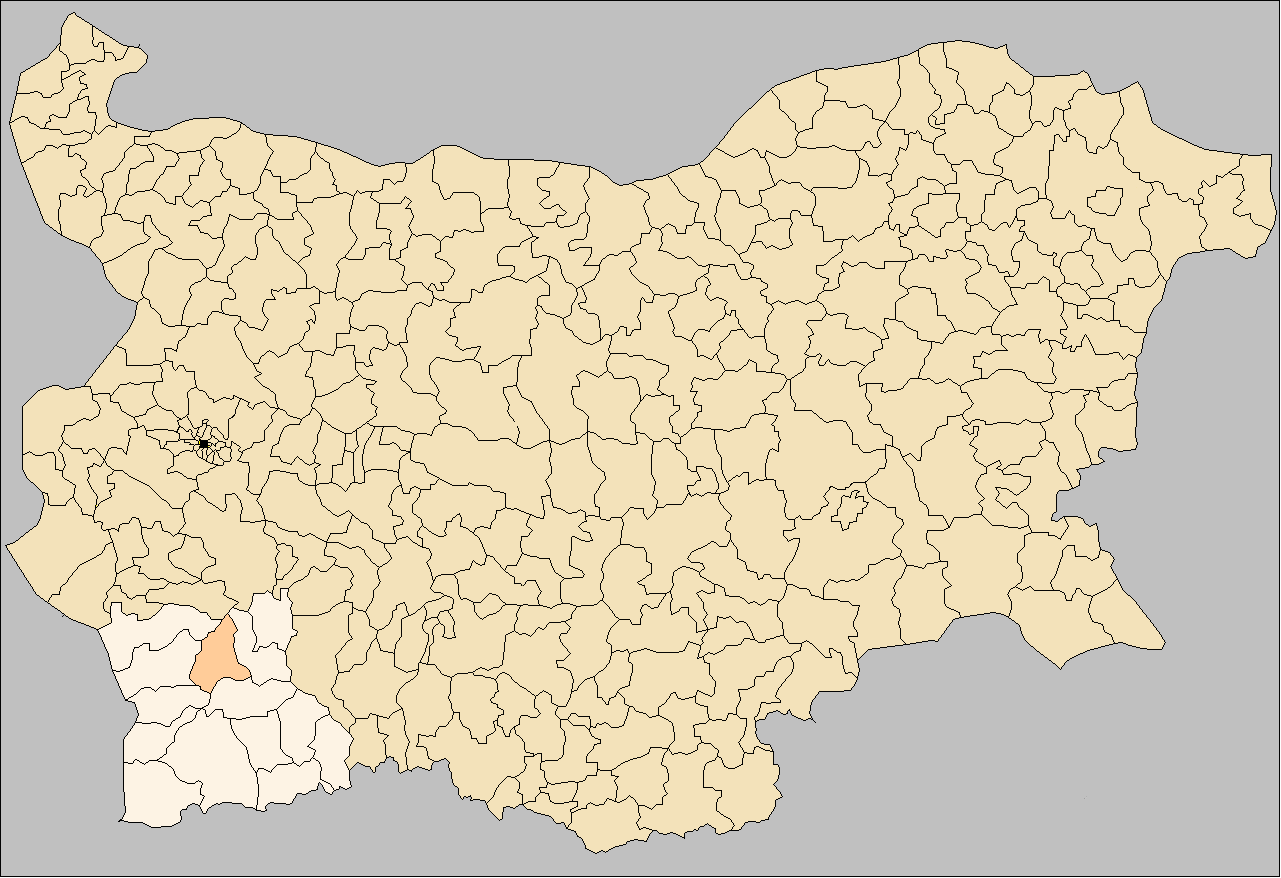|
Razlog
Razlog ( ) is a town and ski resort in Razlog Municipality, Blagoevgrad Province in southwestern Bulgaria. It is situated in the Razlog Valley and was first mentioned during the reign of Byzantine emperor Basil II. The municipality The municipality of Razlog comprises the villages of Banya, Gorno Draglishte, Dobarsko, Bachevo, Godlevo, and Eleshnitsa with a total population of 20,410. Dobarsko, located on the southern slopes of Rila, is home to several historical landmarks. The Church of Theodore Tyro and Theodore Stratelates is a national monument of culture. The church has an abundance of original murals and frescoes, including ones depicting Jesus Christ in what some observers claim to be a rocket. The icons in the tzar (king) row of the church "Sretenie Gospodne" (1860) were painted by Simeon D. Molerov, a representative of the Bansko Painting School. History During his 1894–1896 trip in the region of Macedonia, Bulgarian geographer Vasil Kanchov visited Razlog ... [...More Info...] [...Related Items...] OR: [Wikipedia] [Google] [Baidu] |
Razlog Kapustin Ifb
Razlog ( ) is a town and ski resort in Razlog Municipality, Blagoevgrad Province in southwestern Bulgaria. It is situated in the Razlog Valley and was first mentioned during the reign of Byzantine emperor Basil II. The municipality The municipality of Razlog comprises the villages of Banya, Gorno Draglishte, Dobarsko, Bachevo, Godlevo, and Eleshnitsa with a total population of 20,410. Dobarsko, located on the southern slopes of Rila, is home to several historical landmarks. The Church of Theodore Tyro and Theodore Stratelates is a national monument of culture. The church has an abundance of original murals and frescoes, including ones depicting Jesus Christ in what some observers claim to be a rocket. The icons in the tzar (king) row of the church "Sretenie Gospodne" (1860) were painted by Simeon D. Molerov, a representative of the Bansko Painting School. History During his 1894–1896 trip in the region of Macedonia, Bulgarian geographer Vasil Kanchov visited Razlog (then ... [...More Info...] [...Related Items...] OR: [Wikipedia] [Google] [Baidu] |
Razlog Valley
The Razlog Valley () is a valley in southwestern Bulgaria, Blagoevgrad Province, containing the Razlog, Bansko, and Belitsa municipalities. It is bounded by the Rila Mountains to the north and northwest, the Pirin Mountains to the south and southwest, and the Rhodope Mountains to the east. The transitional continental Mediterranean climate and nature of the valley are influenced by both the high alpine mountain “walls” of Rila and Pirin and the vast and wild Rhodopes, and the warm Mediterranean climate of the Aegean Sea entering from the south via the Mesta river course. It is home to Bansko, a renowned winter resort center and one of the top tourist destinations in Bulgaria. Another popular ski center is Semkovo. The valley is a syncline representing a structural sedimentary basin with an average altitude of the valley bottom of more than 800 m. The highest mountain ridges surrounding the valley reach almost 3000 m, and are rich in glacial landforms. In its northeastern ... [...More Info...] [...Related Items...] OR: [Wikipedia] [Google] [Baidu] |
Razlog Municipality
Razlog Municipality is located in Blagoevgrad Province, Bulgaria. It has 22,124 inhabitants. The town of Razlog is the administrative centre. Places include: Demographics Religion According to the latest Bulgarian census of 2011, the religious composition, among those who answered the optional question on religious identification, was the following: References External links Municipalities in Blagoevgrad Province {{Blagoevgrad-geo-stub ... [...More Info...] [...Related Items...] OR: [Wikipedia] [Google] [Baidu] |
Blagoevgrad Province
Blagoevgrad Province (, ''oblast Blagoevgrad'' or Благоевградска област, ''Blagoevgradska oblast''), also known as Pirin Macedonia or Bulgarian Macedonia (), (''Pirinska Makedoniya or Bulgarska Makedoniya'') is a province (''oblast'') of southwestern Bulgaria. It borders four other Bulgarian provinces to the north and east, the Greek region of Macedonia to the south, and North Macedonia to the west. The province has 14 municipalities with 12 towns. Its principal city is Blagoevgrad, while other significant towns include Bansko, Gotse Delchev, Melnik, Petrich, Razlog, Sandanski, and Simitli. Geography The province has a territory of and a population of 323,552 (). It is the third largest in Bulgaria after Burgas and Sofia Provinces and comprises 5.8% of the country's territory. Blagoevgrad Province includes the mountains, or parts of, Rila (highest point of the Balkans — Musala summit, 2925 m), Pirin (highest point — Vihren summit, 2 ... [...More Info...] [...Related Items...] OR: [Wikipedia] [Google] [Baidu] |
Bachevo
Village of Bachevo is located in South-Western planning region of Bulgaria. It is part of Razlog Municipality, Blagoevgrad Province. Accessed December 25, 2015 Situated at South-western Bulgaria in the (6 km. north-western from town, 52 km. south-eastern from city, and 156 km. south from |
Gorno Draglishte
Gorno Draglishte is a village in Razlog Municipality, in Blagoevgrad Province, Bulgaria Bulgaria, officially the Republic of Bulgaria, is a country in Southeast Europe. It is situated on the eastern portion of the Balkans directly south of the Danube river and west of the Black Sea. Bulgaria is bordered by Greece and Turkey t .... This small mountain village at the foot of the Rila Mountain is surrounded by the Pirin and the Rhodopes. Gorno Draglishte is becoming a tourist attraction for both Bulgarians and foreigners. Nowadays it has a population of approximately 1,000 people. According to the earliest written evidence, the village exists at least since 1576 CE. References Villages in Blagoevgrad Province {{Blagoevgrad-geo-stub ... [...More Info...] [...Related Items...] OR: [Wikipedia] [Google] [Baidu] |
Godlevo
Godlevo is a village in Razlog Municipality, in Blagoevgrad Province, Bulgaria. Accessed May 5, 2010 Godlevo is 12 kilometers from , 6 kilometers from Pirin Golf Country Club, 10 kilometers from (ski center), and 140 kilometers from Sofia
Sofia is the Capital city, capital and List of cities and towns in Bulgaria, largest city of Bulgaria. It is situated ...
[...More Info...] [...Related Items...] OR: [Wikipedia] [Google] [Baidu] |
Rila
Rila (, ) is the highest mountain range of Bulgaria, the Balkans, Balkan Peninsula, and Southeast Europe. It is situated in southwestern Bulgaria and forms part of the Rila–Rhodope Mountains, Rhodope Massif. The highest summit is Musala at an elevation of 2,925 m which makes Rila the sixth highest mountain range in Europe after the Caucasus, the Alps, Sierra Nevada (Spain), Sierra Nevada, the Pyrenees and Mount Etna, and the highest one between the Alps and the Caucasus. It spans a territory of 2,629 km2 with an average elevation of 1487 m. The mountain is believed to have been named after the Rilska River, river of the same name, which comes from the Old Bulgarian language, Old Bulgarian verb "рыти" meaning "to grub". Rila has abundant water resources. Some of the Balkans' longest and deepest rivers originate from Rila, including the Maritsa, Iskar (river), Iskar and Nestos (river), Mesta rivers. Bulgaria's main water divide separating the Black Sea and the A ... [...More Info...] [...Related Items...] OR: [Wikipedia] [Google] [Baidu] |
Dobarsko
Dobarsko ( ) is a village in southwestern Bulgaria, part of Razlog Municipality, Blagoevgrad Province. It is set at 1,070 m above sea level on the southern slopes of Rila with the westernmost Rhodope Mountains to the east and Pirin to the south near the valley of the Mesta River. Dobarsko is 80 km from Blagoevgrad and 17 km from the winter resort Bansko. the village has a population of 672 and about 200 houses, the mayor being Nikola Naydenov. History According to the legend, Dobarsko was founded by soldiers from List of Bulgarian monarchs, Bulgarian tsar Samuil of Bulgaria, Samuil's blinded army after the Battle of Belasitsa in 1014, who arrived in the area en route to the Rila Monastery and discovered a holy spring that allegedly cured them. Dobarsko is first mentioned in Tsar Ivan Shishman of Bulgaria, Ivan Shishman's donor's charter from the Rila Monastery in 1378. During the Ottoman rule of Bulgaria Dobarsko established itself as the most important and richest vill ... [...More Info...] [...Related Items...] OR: [Wikipedia] [Google] [Baidu] |
Pomaks
Pomaks (; Macedonian: Помаци ; ) are Bulgarian-speaking Muslims inhabiting Bulgaria, northwestern Turkey, and northeastern Greece. The strong ethno-confessional minority in Bulgaria is recognized officially as Bulgarian Muslims by the government. The term has also been used as a wider designation, including also the Slavic Muslim populations of North Macedonia and Albania. Most Pomaks today live in Turkey, where they have settled as muhacirs as a result of escaping previous ethnic cleansing in Bulgaria. Bulgaria recognizes their language as a Bulgarian dialect, whereas in Greece and Turkey they self-declare their language as the Pomak language. The community in Greece is commonly fluent in Greek, and in Turkey, Turkish, while the communities in these two countries, especially in Turkey, are increasingly adopting Turkish as their first language as a result of education and family links with the Turkish people. They are not officially recognized as one people with ... [...More Info...] [...Related Items...] OR: [Wikipedia] [Google] [Baidu] |
Muslim Bulgarians
The Muslim Bulgarians (, ''Bǎlgari-mohamedani'', as of recently also Българи-мюсюлмани, ''Bǎlgari-mjusjulmani'', locally called '' Pomak'', ''ahryan'', ''poganets'', ''marvak'', or '' poturnak'') are Bulgarians who follow the faith of Islam. They are generally thought to be the descendants of the indigenous Slavs who converted to Islam during Ottoman rule. Most scholars have agreed that the Bulgarian Muslims are a " religious group of Bulgarian Slavs who speak Bulgarian as their mother tongue and do not understand Turkish, but whose religion and customs are Islamic". Bulgarian Muslims live mostly in the Rhodopes – Smolyan Province, the southern part of the Pazardzhik and Kardzhali Provinces and the eastern part of the Blagoevgrad Province in Southern Bulgaria. They also live in a group of villages in the Lovech Province in Northern Bulgaria. The name '' Pomak'' is pejorative in Bulgarian and is resented by most members of the community, The name ado ... [...More Info...] [...Related Items...] OR: [Wikipedia] [Google] [Baidu] |
Protestantism
Protestantism is a branch of Christianity that emphasizes Justification (theology), justification of sinners Sola fide, through faith alone, the teaching that Salvation in Christianity, salvation comes by unmerited Grace in Christianity, divine grace, the priesthood of all believers, and the Bible as the sole infallible source of authority for Christian faith and practice. The five solae, five ''solae'' summarize the basic theological beliefs of mainstream Protestantism. Protestants follow the theological tenets of the Reformation, Protestant Reformation, a movement that began in the 16th century with the goal of reforming the Catholic Church from perceived Criticism of the Catholic Church, errors, abuses, and discrepancies. The Reformation began in the Holy Roman Empire in 1517, when Martin Luther published his ''Ninety-five Theses'' as a reaction against abuses in the sale of indulgences by the Catholic Church, which purported to offer the remission of the Purgatory, temporal ... [...More Info...] [...Related Items...] OR: [Wikipedia] [Google] [Baidu] |





